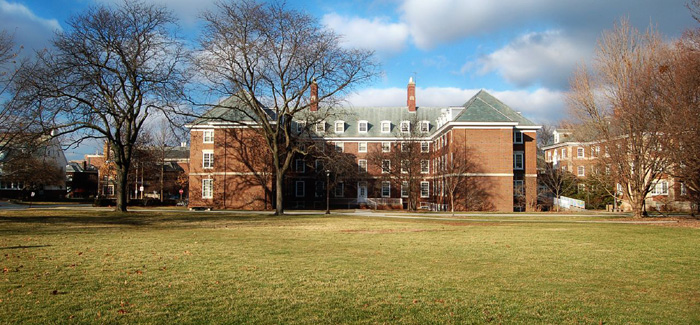A broad and versatile field of study, Mechanical Engineering (ME) blends scientific and technical subjects into a large discipline with many areas of focus, from materials science and thermodynamics to robotics and weapons production. To become a mechanical engineer, it’s necessary to obtain at least a bachelor’s degree in a related area. For those who want to conduct research, a graduate degree is in order.
At both the undergraduate and graduate levels, Mechanical Engineering programs should be accredited by the Engineering Accreditation Commission of ABET. There are more than 300 accredited programs across the U.S. Which are the best ones? From U.S. News & World Report, here are the ten best Mechanical Engineering schools for 2014.
1. Massachusetts Institute of Technology
The Massachusetts Institute of Technology (MIT) is number one among the top Mechanical Engineering schools in the nation just as it is the world’s undisputed top school in applied engineering and technology. MIT is a top-notch pick for students who crave the flexibility to study around their specific research interests. ME enrollees can choose a course of study known as 2-A, which incentivizes students to cross-link with other disciplines or drive deeper into an area of specialization. (The traditional MechE program is Course 2. If your preferred outside discipline is Ocean Engineering, try Course 2-OE). MechE academics are highly selective, financial aid is generous, and the competition is stiff for a spot in MIT’s prestigious Department of Engineering.
2. Stanford University

Flickr / Angel
One of America’s leading universities, Stanford is widely known for its stellar academics, large student body, and prodigious production of research in engineering among other subjects. The Master of Science (M.S.) in Mechanical Engineering program engages graduate students in both coursework and research. There is a strong twin focus on human-centered design and design for sustainability. Five “themes” comprise the Mechanical Engineering department: Biomedicine, Computational Engineering, Design, Energy, and Multi-Scale Engineering. For undergraduates, three degrees are possible: a B.S. in Mechanical Engineering, B.S. in Product Design, or a B.S in Biomechanical Engineering.
3. California Institute of Technology

Flickr / Flora Tsai
The California Institute of Technology, or CalTech, has a preeminent reputation, highly productive researchers, year-round sunshine, and a tiny student-faculty ratio. The Pasadena-based school is considered a smaller, West Coast version of MIT. Its facilities include the NASA Jet Propulsion Laboratory. CalTech alumni include more Nobel Prize-winners than some Ivy League schools. Students have the highest test scores in the West, says The Business Journals. Graduate ME study at MIT may lead to either an M.S. or a Ph.D. in Mechanical Engineering. The M.S. is not terminal. Admission to the master’s program is limited to those who will ultimately pursue the Ph.D. Generous financial aid is available at CalTech for “virtually all” Mechanical Engineering students.
4. University of California at Berkeley
Another California epicenter of innovation in mechanical engineering, the University of California at Berkeley (UCB) offers competitive pure and applied science training. The ‘Public Ivy’ offers the best public education in Mechanical Engineering in the United States. Six elements of the periodic table are named after Berkeley researchers, including ‘einsteinium.’ The school controls access to the Los Alamos, Lawrence Livermore, and Lawrence Berkeley National Laboratories. UCB administers a M.Eng. (Master of Engineering). The ME major has its own admissions process. Berkeley offers the most affordable tuition on this list for both in-state and out-of-state students.
5. Georgia Institute of Technology

Georgia Institute of Technology (Wikimedia)
The Georgia Institute of Technology, known as Georgia Tech, is a popular state public school in ‘Hotlanta’ (Atlanta, Georgia) with respected academics and a very active student life. Although Georgia Tech offers high quality at low rates, the George W. Woodruff School of Mechanical Engineering, part of the College of Engineering, is small and difficult to get into. The 8-building division is the only program considered a Mechanical Engineering Heritage Site by the American Society of Mechanical Engineers. Georgia Tech undergrads can earn a B.S. in Mechanical Engineering (BSME), the first degree ever offered at the institute back in 1888. It’s still available today, along with an M.S., Ph.D., and specialized master degrees in Nuclear Engineering, Medical Physics, Paper Engineering, or Bioengineering.
6. University of Illinois at Urbana-Champaign
Set in the pleasant college town of Urbana, Illinois, the University of Illinois at Urbana-Champaign, a ‘Public Ivy,’ is the flagship and academic powerhouse of the UI system. The Department of Mechanical Science and Engineering, or MechSE, is a large department with more than 1,200 students studying at the undergraduate and graduate levels. With research expenditures exceeding $25 million annually, students and faculty here can explore a wide variety of research areas, from fundamentals like fluid mechanics to leading-edge topics like biomechanics and mechanobiology. Degrees include the B.S., M.S., a combined B.S./M.S., and a Ph.D.
7. University of Michigan at Ann Arbor

Flickr / Corey Seeman
Located in Ann Arbor, Michigan, the University of Michigan, or U-M, is a state school with a substantial number of out-of-state students. Ann Arbor has a small-town feel but many urban amenities; the University has a large student body and resource base to support academic development. Michigan’s Department of Mechanical Engineering has over 600 undergraduates and 430 graduate students, including 250 Ph.D. candidates. Annual research expenditures in this busy section of the University total more than $34 million. U-M offers a Ph.D., bachelor’s in Engineering (BSE), and master’s in Engineering (MSE) with 3 tracks: coursework-only, coursework plus research, and coursework plus a thesis.
8. Cornell University

Flickr / rocketlass
A degree from Cornell – a large private university founded in Ithaca, New York in 1865 – can open doors. The Ivy League institution has many unique research and hands-on project opportunities on offer through its distinguished Sibley School of Mechanical and Aerospace Engineering. Sibley is stocked with extensive instructional laboratories such as the Experiential Learning Lab and Emerson Manufacturing Lab. Graduate ME studies are meant to be interdisciplinary, cutting across departmental boundaries. Students have the flexibility to customize their own curricula. Undergraduate studies lead to the M.S. degree in Mechanical Engineering. Cornell offers the Ph.D. and M.Eng. to graduate students.
9. Princeton University

Flickr / new-york-city
A major destination for engineering studies, Princeton University is an elite Ivy League with an unassailable international reputation. Situated in Princeton, New Jersey, the school has a small, intensive learning environment for driven students who thrive on challenging coursework and close faculty relationships. It’s got a small student-to-faculty ratio and rigorous technical electives, while underscoring the importance of a broad-based liberal arts education. The Department of Mechanical and Aerospace Engineering (MAE) offers a range of interdepartmental initiatives, including a unique Program in Sustainable Energy Science and Technology. Degrees include the BSE, MSE, M.Eng., and Ph.D.
10. Carnegie Mellon University

Flickr / Jiuguang Wang
Carnegie Mellon University in urban Pittsburgh, Pennsylvania is world-famous for its high-quality education in science and technology. The College of Engineering’s Department of Mechanical Engineering (MechE) is one of the school’s top programs. MechE at Carnegie has a forward-thinking philosophy that stresses the importance of innovation and research. A key motto is “Fundamentals with Flexibility.” Undergraduate students in pursuit of a B.S. are encouraged to take up a specialized minor in an area like Environmental Engineering, Robotics, or Electronic Materials. Graduate MechE students earn either an accelerated one-year M.S., a two-year M.S. with a research component, or a Ph.D. There is also a 5-year, dual B.S./MBA program.














